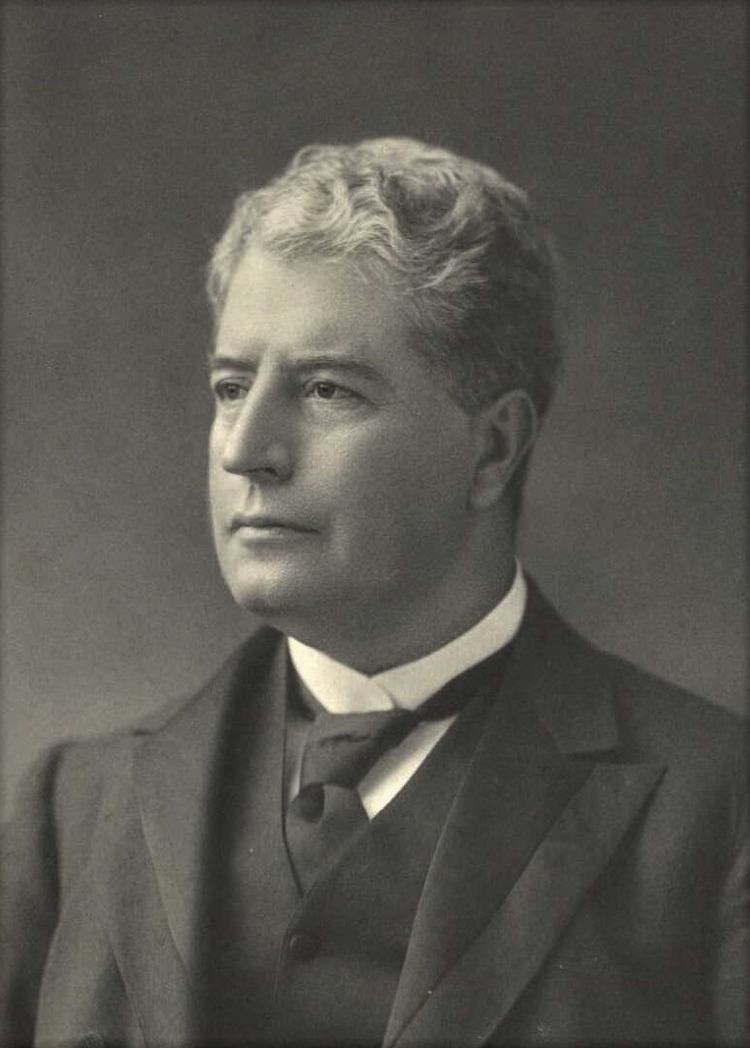Preceded by John Cameron Occupation Electrical engineer Resting place Cremated Name Edward Barton | Nationality Australian Succeeded by Alfred Deakin | |
 | ||
Full Name Edward Gustavus Campbell Barton Born 11 December 1857
Toorak, Victoria, Australia ( 1857-12-11 ) Alma mater Karlsruhe University, Otago University Role Former Prime Minister of Australia Died January 7, 1920, Hydro Majestic Hotel, Medlow Bath, Australia Spouse Jane Mason Ross (m. 1877–1920) Children Edmund Alfred Barton, Arnold Hubert Barton Previous offices Member of the Australian Parliament (1901–1903) Similar People Alfred Deakin, Henry Parkes, Andrew Fisher, Julia Gillard, Harry Seidler | ||
Political party Kidston Socialists | ||
Edward Gustavus Campbell Barton (11 December 1857 – 14 June 1942) was an electrical engineer and a member of the Queensland Legislative Assembly.
Contents
Early years
Barton was born in Toorak, Victoria, to parents George Elliott Barton, a barrister from Ireland, and his Scottish wife, Jane Crichton (née Campbell). After receiving his schooling in Dunedin, New Zealand, he studied electrical engineering at Otago University and then Karlsruhe University in Germany. After gaining further experience at his profession in Scotland, Barton became superintendent of England's first commercial electric-lighting system in Godalming, Surrey.
He then became a consultant in both New Zealand and Australia where he installed electrical plant for the Phoenix Gold Mines at Gympie in Queensland and also worked for the Australasian Electric Light, Power & Storage Co. In 1886, he was employed to complete lighting installations at Parliament House and the government printing office in Brisbane before resigning in 1888 to go into business with C. F. White. This partnership began supplying electricity to the public from their Edison Lane premises by means of a direct-current generator driven by a steam-engine.
Although their first customer was the General Post Office, the pair found competition from gas companies and general conservatism to this new idea a major hurdle and in 1896 the company was liquidated. Barton then formed the Brisbane Electric Supply Co. Ltd and within a few years had moved from Edison Lane to new premises in Ann street where in 1901 he installed the first steam turbine in the state. The company was renamed the City Electric Light Co. Ltd in 1904 and Barton later resigned to once again act as a consultant.
Political career
At the 1908 state election, Barton, representing the Kidstonites, was a candidate for the two member seat of Brisbane North. Along with Edward Forrest, Barton was returned in a close contest, winning his seat by 31 votes. He was in parliament for just over 18 months and did not stand at the 1909 state election.
Later life
Having lectured in electrical engineering and physics at the Brisbane Technical College since 1889, Barton became president of the College's council in 1905. He had also urged the establishment of a local university in 1901 and when the University of Queensland opened in 1909, Barton was appointed to its first senate, chairing the buildings and grounds committee. In 1910, he was president of the Brisbane Institute of Social Service, serving in that role until 1915.
In 1915, Barton travelled to England to work for the British Ministry of Munitions. Fluent in French, German and Italian, he later served the Admiralty in an information department. After World War I Barton elected to stay in Europe but returned home several times in the 1920s. Around 1918 he joined the British Decimal Association and served as its chairman from 1938 until 1942.
A fellow of the Royal Meteorological Society and the Royal Geographical Society, Barton died at Watford, Hertfordshire in June 1942 and was later cremated.
